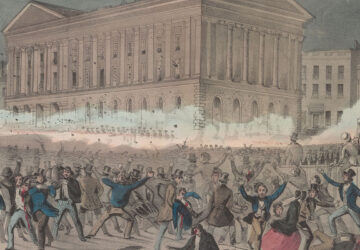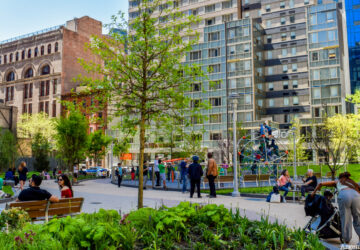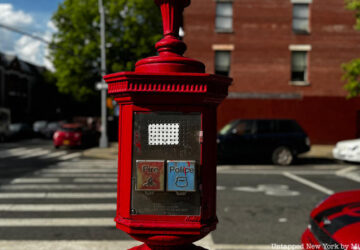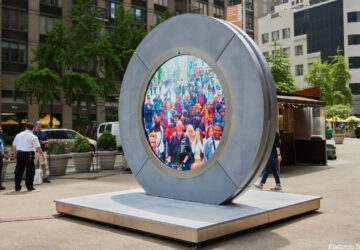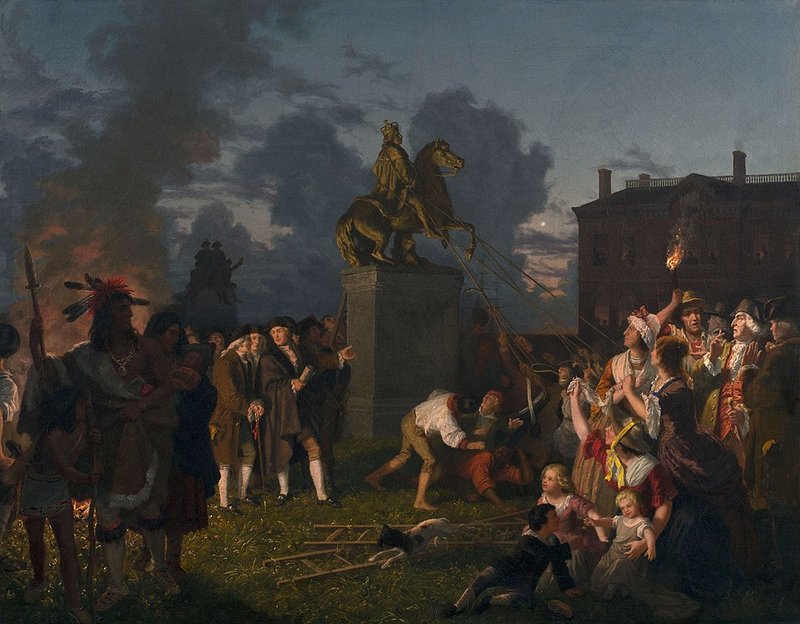 Tearing down the sculpture of King George in Bowling Green. Painting by Johannes Adam Simon Oertel. Image from Wikimedia Commons.
Tearing down the sculpture of King George in Bowling Green. Painting by Johannes Adam Simon Oertel. Image from Wikimedia Commons.
Revolution was coming. The American Continental Congress, sensing the inevitability of a break from the British Empire and the ensuing war, had called George Washington, the head of the Continental Army, to come down to New York from Boston. Even though New York’s population of 20,000 was only the seventh largest in the colonies, Washington considered the city of “infinite importance,” as British control of its ports and waterways would “stop the intercourse between the northern and southern colonies, upon which depends the safety of America.” On April 13, 1776, Washington and his revolutionary army rolled into town.
During his stay in Manhattan, Washington stayed at a mansion at Charlton and Varick Streets in SoHo, which was pretty far uptown at the time. In contrast, most of his soldiers slummed it up, living in barracks, tents, or houses belonging to Tory sympathizers who had fled town. The army itself, 20,000 strong, was drawn from across the thirteen colonies. It was a magical moment: the men sized up each other’s cultural, religious and even wardrobe differences as they met fellow Americans from other colonies for perhaps the first time.
By day this ragtag assembly worked to fortify the city against the coming naval invasion, a major challenge, given that Manhattan is surrounded by water and the revolutionary forces lacked a navy. By night they partied in a sketchy makeshift entertainment district north of town, in present-day Washington Square Park. Drinking, prostitution and gambling ran amok in a scene nicknamed “The Holy Ground.”
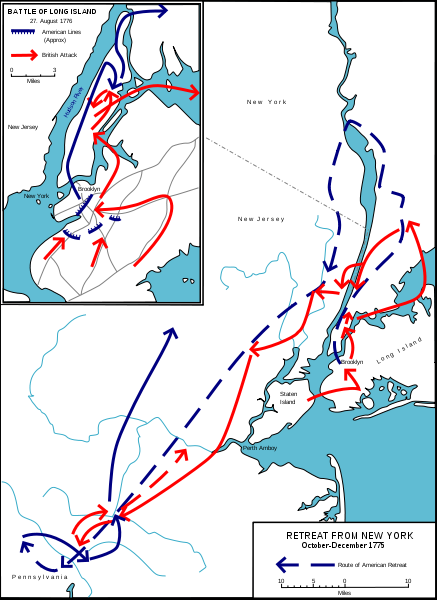 This Wikimedia image shows the Revolutionaries’ retreat from New York in 1776.
This Wikimedia image shows the Revolutionaries’ retreat from New York in 1776.
In late June, British General William Howe rolled up with 500 ships carrying 32,000 soldiers, including 9,000 German mercenaries hired due to the war’s unpopularity amongst the English. These Germans, called “Hessians,” would be stationed in present-day Williamsburg for the duration of the war. After some posturing (and a certain July 4 declaration), Washington and Howe readied their forces to rumble.
The Battle of Long Island, fought primarily near the Gowanus Creek in late August, was an absolute disaster for the young Americans. Washington’s frightened and poorly trained troops were routed so badly that the entire army was nearly surrounded and captured, which would have ended the revolution. As it was, thousands were captured or killed. Washington and 9,000 troops escaped silently from Brooklyn Heights to Manhattan under the cover of night, and lived to see another day. The Brits and Americans would clash several times in the New York area over the next few months, including the revolutionaries’ first winning battle at Harlem Heights (on a site that includes what is now Columbia University). By the end of 1776, however, the last Washington’s troops were captured, killed or worse, retreated to New Jersey. They wouldn’t see New York City again until the war was over.
Next, check out the New York City and Long Island film locations for the AMC television show about the Culper Spy Ring during the Revolutionary War and discover the forgotten holiday New Yorkers celebrated to mark the departure of British troops!
Read more from Today in NYC History on Untapped Cities and on janos.nyc
